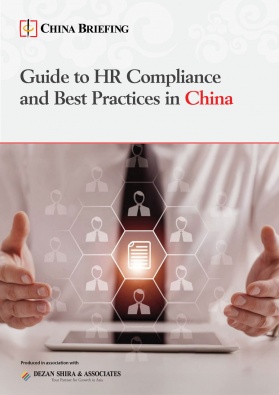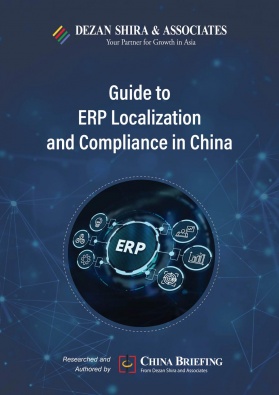China Releases ESG Reporting Standards for Businesses
China released a new set of ESG Reporting Standards, aiming to establish a mandatory, ISSB-aligned reporting system by 2030, with key standards introduced by 2027. These efforts seek to standardize ESG reporting, enhance transparency, and support sustainable development goals nationwide.
China is setting its sights on becoming a global leader in corporate sustainability reporting in the next decade. On May 27, 2024, China’s Ministry of Finance (MOF) opened a public consultation on the Exposure Draft of the Chinese Sustainability Disclosure Standards for Businesses (hereinafter, the “draft standards”). According to the accompanying explanatory document, China intends to create a mandatory International Sustainability Standards Board (ISSB)-aligned sustainability reporting system by 2030, with fundamental sustainability-related and climate-related disclosure standards set to be introduced by 2027.
The primary goal of this framework is to guide Chinese companies toward a standardized approach to sustainability reporting, facilitating the comparison of environmental, social, and governance (ESG) reporting, and improving the information available to investors, creditors, regulators, and other stakeholders.
This article explores the key aspects of China’s new draft standards, the timeline for their implementation, and their potential implications for businesses and investors.
Overview of the draft standards
The new draft standards for ESG reporting represent the most authoritative document on this subject in China to date. These guidelines adopt the principles and framework established by the ISSB, while tailoring them to China’s specific context. The MOF specified that the draft standards will not adopt a one-size-fits-all mandatory approach, but rather gradually phase in voluntary and mandatory reporting for listed and non-listed companies in order to take into account the “development stage and disclosure capabilities of Chinese companies”.
The draft standards mandate that Chinese companies disclose significant sustainability-related risks, opportunities, and impacts associated with their operations and value chains. The term “value chain” is defined as the “interactions, resources, and relationships of the company’s business model and the external environment in which it operates, including those utilized and relied upon by the company’s products or services from conception through delivery and consumption to the end of the lifecycle.”
Open for public consultation until June 24, the draft standards comprise six chapters and 33 articles, covering general provisions, disclosure objectives and principles, information quality requirements, disclosure elements, additional disclosure requirements, and supplementary provisions. This framework aims to standardize ESG reporting, ensuring the information provided by companies is reliable, comparable, and useful for stakeholders.
Scope of sustainability disclosure
The scope of sustainability disclosures encompasses a range of topics, including:
- Environmental topics such as impacts and exposure to climate change, pollution, water and marine resources, biodiversity and ecosystems, resource use, and circular economy practices.
- Social topics include the rights and protection of employees, consumers, and end-users, relationships with communities, and rural revitalization.
- Governance topics related to business conduct.
Disclosures of sustainability information must adhere to the “materiality” principle, meaning only material information needs to be disclosed. Sustainability-related information is considered material if “its omission, misstatement, or ambiguity is reasonably expected to influence decision-making.” The materiality assessment should align with that used for financial statements. The draft standards specify that disclosures should be synchronized with the reporting timelines for financial statements, with cross-references and correlations facilitated by an index or textual explanation.
Moreover, sustainability-related information must be presented in a stand-alone sustainability report, written in clear and structured language, and may be disclosed to the public concurrently with the financial statement.
Notably, the sustainability report should be published on the company’s official website or through other means
Key elements in ESG reporting
Aligned with the ISSB IFRS S1 and S2 standards, the framework for ESG reporting is structured around four core elements to ensure that enterprises meet the informational needs of primary users. Unless otherwise specified by other guidelines, enterprises must include the following components in their ESG reporting:
- Governance: The governance structure, control measures, and procedures used by the enterprise to manage and supervise sustainable risks and opportunities.
- Strategy: The plans, strategies, and methods employed by the enterprise to handle sustainable risks and opportunities.
- Risk and opportunity management: The processes used by the enterprise to identify, assess, prioritize, and monitor sustainable risks and opportunities.
- Metrics and targets: The indicators used to measure the performance of managing sustainable risks and opportunities, along with the enterprise’s goals and progress towards national laws, regulations, and strategic planning requirements.
Chapter 4 of the draft standards further defines the scope of information under each pillar, as illustrated in the table below.
| Key Elements in ESG Reporting Standards | |
| Area | Scope of information |
| Governance |
|
| Strategy | Information under this category must include:
|
| Risks and opportunities management | To clarify how enterprises manage sustainable risks and opportunities, disclosures must include:
|
| Metrics and targets |
|
Timeline for implementation
Comments on the draft standards can be submitted until June 24, 2024. Interested parties are encouraged to send their feedback to czbkjsmof@163.co.
The interaction between all the respective reporting frameworks released in China so far remains unclear. Additional guidance may be provided by Chinese government bodies in the near future.
Recent developments in China’s ESG regulatory landscape
In recent years, China has implemented significant measures to advance ESG practices, alongside initiatives aimed at achieving carbon peak, carbon neutrality, and ecological protection. These efforts reflect China’s commitment to sustainable development and improving corporate transparency. Following the release of the draft standards, for example, the Beijing Municipal Commission of Development and Reform unveiled its Action Plan on Promoting the High-quality Development of Environment, Social, and Governance (ESG) System (2024-2027) on June 14, 2024.
This comprehensive plan introduces 20 measures across seven strategic areas aimed at fostering robust ESG practices among businesses operating in Beijing.
A key focus of the action plan is to significantly increase the disclosure of ESG-related information among companies, targeting a disclosure rate of around 70 percent by 2027. Large enterprises, defined by their turnover, total assets, or number of employees, are encouraged to lead in adopting standardized ESG disclosure practices.
Nation-wise, a key milestone in ESG reporting was the introduction of the Sustainability Reporting Guidelines for Listed Companies, introduced by the Shanghai, Shenzhen, and Beijing Stock Exchanges. These guidelines establish China’s first unified standard for corporate ESG reporting, setting a new benchmark for listed companies.
Additionally, the People’s Bank of China, together with seven other departments, issued guidance incorporating ESG factors into credit assessments for the first time. This move underscores the growing importance of sustainable practices in evaluating corporate borrowers.
The impact of these regulatory changes is evident in the reporting practices of listed companies. By the end of April 2024, 1,938 A-share listed companies had published ESG reports, as reported by China Galaxies Securities. Leading sectors in ESG disclosure include banking, non-bank finance, steel, mining, and public utilities. Notably, centrally administered state-owned enterprises (SOEs) have the highest disclosure rate, with 80 percent publishing ESG reports.
China’s ESG investment is also experiencing rapid growth. According to SynTao Green Finance, by the end of Q3 2023, ESG investments in China reached a record RMB 33.06 trillion (approximately US$4.56 trillion), a 34.4 percent increase from 2022.
As ESG principles gain broader acceptance, the range of ESG-related financial products is also expanding. Data from Wind indicates that from 2019 to 2023, the number of pure ESG funds grew from 16 to 135, while ESG stock indices increased from 66 to 370.
These developments highlight China’s proactive approach to promoting sustainable business practices and enhancing the quality of ESG disclosures. As investors and stakeholders increasingly prioritize sustainability, these measures are expected to play a crucial role in shaping corporate governance and environmental responsibility in China.
About Us
China Briefing is one of five regional Asia Briefing publications, supported by Dezan Shira & Associates. For a complimentary subscription to China Briefing’s content products, please click here.
Dezan Shira & Associates assists foreign investors into China and has done so since 1992 through offices in Beijing, Tianjin, Dalian, Qingdao, Shanghai, Hangzhou, Ningbo, Suzhou, Guangzhou, Dongguan, Haikou, Zhongshan, Shenzhen, and Hong Kong. We also have offices in Vietnam, Indonesia, Singapore, United States, Germany, Italy, India, and Dubai (UAE) and partner firms assisting foreign investors in The Philippines, Malaysia, Thailand, Bangladesh, and Australia. For assistance in China, please contact the firm at china@dezshira.com or visit our website at www.dezshira.com.
- Previous Article Guide to HR Compliance and Best Practices in China
- Next Article China Issues New Fair Competition Review Regulations in Effort to Improve the Business Environment








